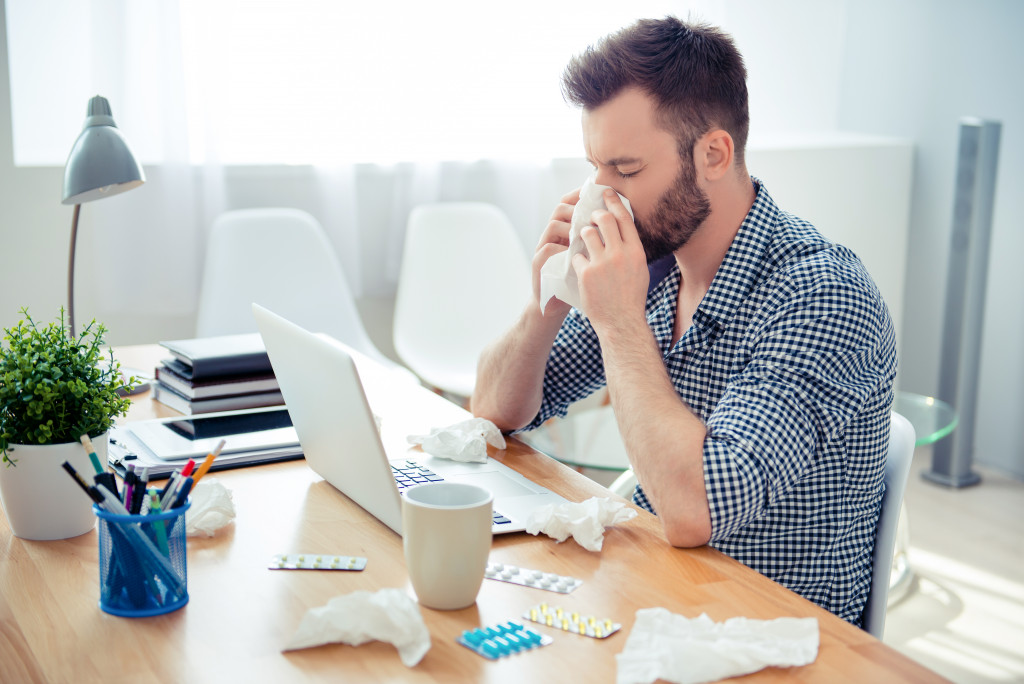If you’ve been sneezing a lot lately and can’t figure out why it might be time to take a closer look at your home. After all, your home is where you spend most of your time, so it makes sense that it would impact your health. Here are a few possible culprits for your sneezing fits.
Dust Mites
If you’ve been sneezing in the comfort of your own home and can’t figure out why it could be due to dust mites. Dust mites are microscopic creatures that live in warm and humid environments, such as carpets, sheets, and pillows. They feed on organic debris like skin cells and dander, then release allergens into the air. These allergens can lead to respiratory problems such as coughing, sneezing, and congestion.
Although they cannot be completely eliminated from the home, some measures can be taken to reduce the presence of dust mites in your living environment. Vacuuming carpets weekly with a high-efficiency filter vacuum cleaner can help take up excess moisture while minimizing airborne dirt particles. Regularly laundering bedding – sheets, pillowcases, and comforters – at least once a week with hot water (130°F) will reduce the population of mites in your bedroom. Finally, consider replacing fabric curtains or blinds with washable plastic varieties that can occasionally be scrubbed down with soap and water to protect against dust mite accumulation.
Pet Dander
Pet dander are microscopic flakes of skin shed by cats and dogs – and even some other animals such as rodents! Because these flakes are tiny and light, they can easily become airborne and go unnoticed, yet their effects can be felt immediately. When inhaled, pet dander particles provoke an immune response that can cause congestion, red and itchy eyes, runny nose, coughing, rashes, or a general feeling of being ill.
To prevent this from happening in your household, it’s important to be proactive by reducing the presence of furred animals at home, bathing them regularly, using HEPA-filtered vacuum cleaners, dusting off surfaces where dander settles often, and washing bedding frequently. These measures can help keep those allergy-causing symptoms at bay.
Mold
It’s no secret that indoor air quality can be an issue for homeowners. One key component is being aware of possible mold infestation in your living space. Mold loves damp, dark areas where moisture can linger, such as bathrooms and basements, but can also be seen around windows or places that have experienced a leak recently.
Checking for visible signs of mold is the first step – it’s often greyish-green with a fuzzy texture – but if you suspect it’s airborne, you might need to call in a professional to inspect and determine exactly what is lurking in your home. The good news? You can take steps to remove the fungus once it’s been identified and stop allergies from occurring again. Investing in air purifiers, regularly cleaning ducts and gutters, and using dehumidifiers make great preventive measures against future fungal growth.
Perfumes and Fragrances

Many people overlook perfumes and fragrances in their homes as a potential source of irritation. However, using chemical-based products for scent can cause adverse reactions in some people. It’s important to remember that smells from perfume or air fresheners may travel quickly through the air and react with chemicals from other sources – like paint, furniture polish, and cleaning solutions in the home – to create stronger odors. In addition, these scents can linger long after you are done using them, amplifying their effects if someone is particularly sensitive.
If you start sneezing uncontrollably in a room or near certain items, stop and consider if any perfumed items could be the cause. Taking note of changes like this can help you identify potentially harmful scents and eliminate them to reduce unwanted reactions. Consider stepping back and reassessing any perfumes or fragrances used around your home to find out if they may be causing harm instead of comfort.
However, if you still find yourself sneezing after all this, consider an allergy treatment for adults. Some health centers specialize in diagnosing and treating allergies, and many have online portals for booking appointments or checking symptoms. With their help, you can identify the specific allergen causing your sneezing fits and take steps to avoid it. And with a little extra diligence, you should be able to enjoy good health in your home once again.
If you’ve been sneezing a lot lately but can’t pinpoint the cause, one (or more) of the things listed here could be to blame. By being aware of potential triggers and taking steps to reduce their presence, you can protect yourself from sneezing-related discomfort and keep your home healthy.
